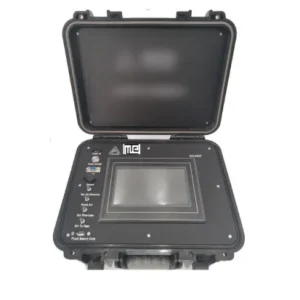$1,390.00 – $1,490.00Price range: $1,390.00 through $1,490.00
This maze was initially introduced by Sato et al. (2017) for the study of learning and memory. It features five vertical and five horizontal corridors, enabling a versatile arrangement of pathways. Much like the Hebb-Williams maze, this setup allows for progressively challenging modular tests to assess spatial learning and memory in rodents. MazeEngineers offers this device for both mice and rats.

MazeEngineers empowers preclinical neuroscience research with meticulously designed, customizable behavioral apparatuses. From manual classic mazes to fully automated smart systems, we provide the tools scientists need to capture high-quality, reproducible data for studies on learning, memory, anxiety, and depression.

bool(false)


Mouse |
Transparent Corridor: 8 cm (w) x 80 cm (l) |
Corridor doors: 4cm (w) |
Cooridor doors placement: every 4cm |
End compartments: 15 cm (l) x 15 cm (w) |
End compartment door: 6cm (l) x 6 cm (w) |
Rat |
Transparent Corridor: 12 cm (w) x 110 cm (l) |
Corridor doors: 6cm (w) |
Cooridor doors placement: every 6cm |
End compartments: 20 cm (l) x 20 cm (w) |
End compartment door: 8cm (l) x 8 cm (w) |

The Flex Maze is specifically designed to evaluate lateral-flexion discomfort in rodents, providing a means to assess physical function related to disc degeneration. Millecamps et al. used this maze to explore how progressive, age-related disc degeneration affects the development of chronic lower back pain in SPARC-null mice.
Lower back pain encompasses several complex and painful conditions, including axial lower back pain (confined to the spine and lower back), radiating lower back pain (which extends to the legs and may be referred), and radicular pain (resulting from nerve root injury or inflammation). This apparatus allows for the assessment of behavioral indicators of axial and radiating lower back pain by examining how physical function declines with age and lumbar disc degeneration in SPARC-null mice. These mice are selected due to their closer mimicry of human lower back pain, exhibiting reduced intervertebral disc height, increased disc wedging, and histological signs of degeneration, alongside cutaneous hypersensitivity in the hind paw, axial discomfort, and diminished physical function (Millecamps et al., 2012).
SPARC (secreted protein, acidic and rich in cysteine) is a crucial protein involved in tissue remodeling following injury. Its levels decrease in human intervertebral discs with aging and disc degeneration. Thus, SPARC-null rodents are valuable for studying age-related behavioral signs of chronic lower back pain and investigating the link between disc degeneration and lower back pain in pre-clinical models. These SPARC-null mice are compared to wild-type (WT) mice of the same age to evaluate differences in responses and provide a control group (Millecamps et al., 2012).
The Flex Maze features a long, transparent corridor measuring 8 x 80 cm. The corridor is equipped with regularly spaced staggered doors that induce lateral flexion during exploration. Each door is 4 cm wide and alternates sides every 4 cm. At each end of the maze, there are neutral, beige compartments measuring 15 x 15 cm, each with a 6 x 6 cm opening (Millecamps et al., 2012).
Both SPARC-null and WT mice are bred in similar housing and lighting conditions and are fed a similar diet. Both types of rodents are assessed at similar ages to gauge differences in response and age-related changes.
To assess disc degeneration, subjects aged between 6 and 80 weeks are anesthetized, and spinal segments from T1 to S4 are collected and post-fixed. The samples are then cryoprotected and stored until further processing (Millecamps et al., 2012).
X-ray imaging of the intact lumbar spine is used to evaluate the disc height index (DHI) and wedging index (DWI) (Millecamps et al., 2012).
For histological analysis, spinal columns are dissected and decalcified. Key indicators of degeneration include the loss of distinct compartmentalization between the nucleus pulposus and annulus fibrosus, annular tears, and dorsal bulging or herniation (Millecamps et al., 2012).
SPARC-null and WT mice aged 6 weeks to 1.5 years are chosen for the longitudinal study. The behavioral studies are preceded by a habituation period of 1 hour. Several parameters are assessed in the longitudinal behavioral study. These include sensitivity to cutaneous sensory stimuli (mechanical sensitivity, cold sensitivity, and heat sensitivity), axial discomfort (grip force assay and tail suspension assay) and assessment of physical function. (Millecamps et al., 2012)
Sensitivity to cutaneous sensory stimuli: Three modalities are assessed, mechanical, cold and heat. This assessment is done on three body sites, feet, tail and lower back. For the lower back region, the animals are shaved under brief anesthesia 48 hours before testing. (Millecamps et al., 2012)
Mechanical sensitivity: This is assessed on the plantar surface of the left foot and the bony structures between L2 and L4 lumbar spine using the up and down method for von Frey filaments. (Millecamps et al., 2012)
Cold sensitivity: For feet and back, cold sensitivity is assessed by measurement of the total time spent in acetone-evoked behaviors after acetone is gently applied to the plantar surface of the hind paw or the low back region. Cold sensitivity for the tail is assessed by cold water tail immersion assay. (Millecamps et al., 2012)
Heat sensitivity: For feet, this is assessed by the latency to withdrawal in response to exposure of the hind paw to a radiant heat stimulus. Heat sensitivity for the tail is assessed by recording of the latency to withdraw the tail in response to noxious heating. (Millecamps et al., 2012)
Axial discomfort: detection of signs of axial discomfort in SPARC-null mice is done by employing two approaches, grip force assay, and tail suspension assay. (Millecamps et al., 2012)
Grip force assay: The subject is stretched gently as it is gripping a bar with its forepaws until it lets go. The force is recorded in grams. (Millecamps et al., 2012)
Tail suspension assay: Digital software is used to measure the spontaneous reactions to natural gravity induced stretching of the spine in a modified version of the tail suspension assay. The measurements that are made are the duration of time spent in immobility, rearing, full extension and self-supported. (Millecamps et al., 2012)
Physical function: The physical function is assessed using the Flex Maze. This is used to measure lateral flexion-induced discomfort. The subject naturally wants to explore the maze, but due to the staggered doors, the subject is forced to undergo lateral flexion to progress. The subjects are allowed to explore the apparatus for 10 min freely. The distance covered and average velocity is assessed via videotapes. (Millecamps et al., 2012)
At 24 weeks of age, the assay is conducted on a single cohort. This assay involves recording the total duration of specific behaviors elicited within a 5-minute window following a local subcutaneous injection of Icilin—a TRPM8 agonist—into either the upper lip or the plantar surface of the hind paw. The behaviors assessed include biting, scratching, licking, and checking (Millecamps et al., 2012).
This assay measures the evoked behavior during the 5 minute after a local subcutaneous injection of capsaicin in the upper lip or the plantar surface of the hind paw. The behavior that is measured is biting, scratching, licking and checking. (Millecamps et al., 2012)
Several variables and parameters are recorded to carry out the data analyses for the flex maze:
These variables are recorded for the SPARC-null and WT mice at different ages to make a comparison. (Millecamps et al., 2012)
The SPARC-null mouse model of lower back pain resulting from disc degeneration offers a more precise representation than other animal models of discogenic or radiating pain. This is because it allows for the assessment of the degenerative process throughout the entire lifespan of the subject, capturing the gradual, age-related progression of the condition (Millecamps et al., 2012).
Anatomical and biochemical differences between rodent models and humans can impact the precision of experiments. These variations include discrepancies in movement range and responses to applied loads, attributable to differing morphologies (Alini et al., 2007).
The mechanisms behind lower back pain are not well understood, and the connection between disc degeneration and lower back pain remains unclear (Millecamps et al., 2012).
Millecamps, M., Tajerian, M., Naso, L., Sage, E. H. & Stone, L. S., (2012). Lumbar intervertebral disc degeneration associated with axial and radiating low back pain in ageing SPARC-null mice. Pain, 153 (6), 1167-1179.
Alini, M., Eisenstein, S. M., Ito, K., Little, C., Kettler, A. A., Masuda, K., Melrose, J., Ralphs, J., Stokes, I. & Wilke, H. J. (2007). Are animal models useful for studying human disc/degeneration? European Spine Journal, 17(1), 2-19.
| Species | Mouse, Rat |
|---|
There are no questions yet. Be the first to ask a question about this product.